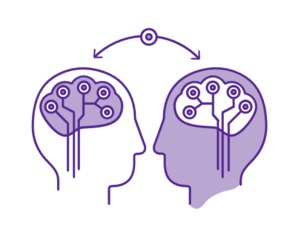Communication is a 2-way process and in the process of Coaching it is a vital tool to establish an openness between the Coach and the Client in order to have an effective Coaching session. As the coach and the client delve into the coaching interactions the established standard of effective communication ensures that the necessary information is available to the coach to help the client to navigate there was around obstacles and challenges that have been identified and hidden.

It is critical that its key elements of Effective Communication are fulfilled to make it effective. The coach with great precision carefully balances the two aspects of Questioning and Listening to assist the client to see clearly the situation around them to help the ascertain the best possible way create a journey of learning. Let us now explore the 2 powerful tools of effective communication:
- Questioning
- Listening to understand
Questioning:
The Coach will need to effectively used target question to understand objectives, help identify the desired outcomes from the program and the sessions and help understanding the current situation, obstacles and challenges from the client’s perspective. As the Coach eases into the coaching sessions with the mindset that “People already have the resources within to achieve what they want!” effective questions with unravel the unexplored paths and present radical options to the client to explore by self-realization. Questions are like key which unlocks door that opens up new spaces within the mind of the client resulting in widening the perception of the situation by the client which is critical to the whole experience in making the client feel empowered. The right questions will trigger a thought pattern and that can lead to newer directions previously unexplored by the client which in natural environment of the client was not possible. The coach will carefully choose the questions that will get the client to initiate a free flow of ideas which is imperative to the creative phase of the coaching process. The Coach will need to use “Open Ended” questions that allow unrestricted and free flowing answers that provide the client a safe environment to expressive and creative, this key to breaking inhibitions one might carry into a coaching session. While the effective usage of Open-ended Questions is encouraged the Coach can also back up the initial open-ended questions with secondary probing questions to get the client to focus on specific areas which need better clarity. While there is an array of questions available to the coach one must be cautious in choosing the right kind of questions. The point to help in choosing the right kind of questions are as follows:
- KISSS – Keep it Simple, Short and Sweet
The Questions asked to be easily understood by the client and the coach will need to ensure they are direct and use vocabulary that is mirroring the client with appositive tone. Avoid asking negative questions or acknowledging client responses with negative remarks
- Probe to understand
As the coach is setting up an environment for open communication it is very important for the Client to have more time and space to express themselves. Open ended, probing questions and strategic pauses in waiting for the client to respond or react ensures the client is suggestively nudged to think and realize in an introspective mindset
- Steer away from B&W
As the coach is in a posture of total commitment to help the client achieve their goals it is crucial that the coach demonstrates trust in the client’s ability to be creative, this can be done by avoiding questions that start with Why? and but? As when used the client will feel that the coach is being judgmental and biased.
Listening to Understand:
While Questions unlock answers the coach will need to be ready to receive the responses from the client so that every aspect is captured for understanding and further clarification. As the Client is expressing themselves it is important that the coach is able to listen for the following:
- Implied:
- Emotions (empathy)
- Information (Attentive)
- Unimplied:
- Sarcasm
- Contradictions
Which people communicate using facts and figure the coach can clearly capture the data as it is presented in any form, however it is key to capture the emotions which is indicative of the emotional attachment the client share with what is being discussed. This will help the coach understand the importance and impact of what is being discussed and what does it means for the client to have a successful outcome. The Coach will also need to be mindful in catching and sarcastic comment and seek clarification as it can indicate any belief patterns that could be inhibiting the client. As the coach is with the client through the entire journey catching contradicting view points and seeking clarification brings about a focus on the objectives of the coaching session.
While one listens with the ears a coach is listening with their total presence in the coaching environment where smiles, giggles, smirks, slumped shoulder speak louder than words. The Coach is watchful to catch everything that is unsaid in a coaching session. That is why a coach is in total submission to the co-creative journey of Coaching individuals.





Leave a Reply